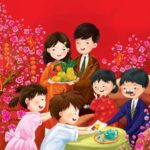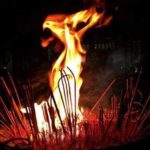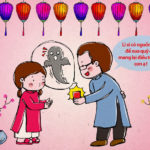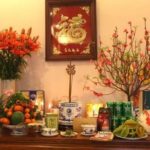Let’s explore the beauty of the incense burning ritual:
Where does the scent of incense come from?
According to folklore, incense originated in India 5,000 – 6,000 years ago. India is a country with a developed Buddhist religion and is the place where the Buddha was born and went through various events in his life before attaining enlightenment. During the time of the Tần Trung Quốc dynasty, a monk from India brought back incense to their country. Since then, incense has gradually become a popular material widely used in China during the Ming dynasty.
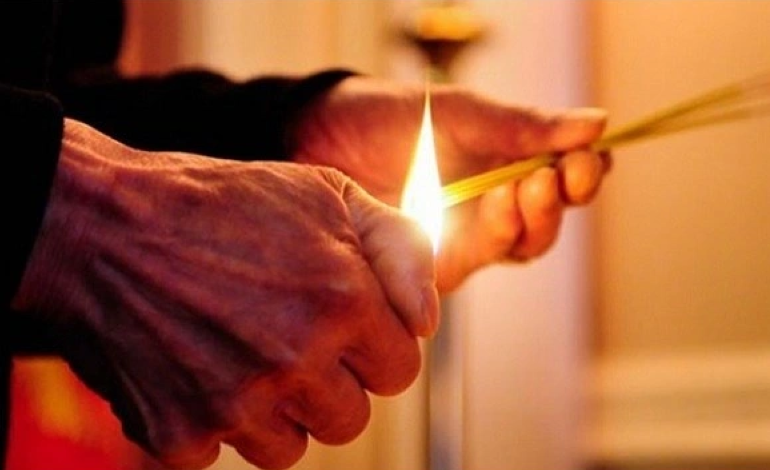
For the Vietnamese people, incense represents not a superstitious belief, but a beautiful tradition. Perhaps it is the natural and warm fragrance of incense that makes people believe it belongs to the divine spirits and serves as a means of connecting them with humans. From there, people use incense every day, especially on special occasions and during Tet holidays, to worship the divine spirits and ancestors, as well as to burn incense for Ong Dia – the Earth God.
Offering incense is a way of showing respect in a solemn and appreciative manner. The Vietnamese people always preserve the tradition of burning incense on important occasions such as death anniversaries and Tet holidays. The subtle fragrance lingering in the air has become an integral part of the Vietnamese people’s consciousness for generations.
The meaning of the incense burning ritual
Humans go through normal days in their lives. And on full moon days, the first day of the month, or during the Tet holiday, the scent of burning incense serves as a signal marking important milestones. The fragrant scent of incense reminds descendants to express their respectful remembrance of their grandparents, ancestors, and divine spirits.
Burning incense is a long-standing cultural and ritual practice. The Vietnamese people, with their tradition of remembering their roots, always keep in mind the source. The meaning of the incense burning ritual is rooted in that philosophy. Burning incense is not required every day of the year, but only on specific days according to tradition.
Buddhists also see incense as a bridge connecting them to their ancestors and celestial beings to express their heartfelt devotion. It is written in Buddhist scriptures:
“Wholeheartedly,
Sending the fragrance with the clouds,
Spreading across the ten directions,
Offering to the Triple Gem.”
The aroma of incense spreading in the air brings tranquility and clarity to the soul, liberating humans from the illusions and negative habits, and guiding their hearts towards benevolence and peace.
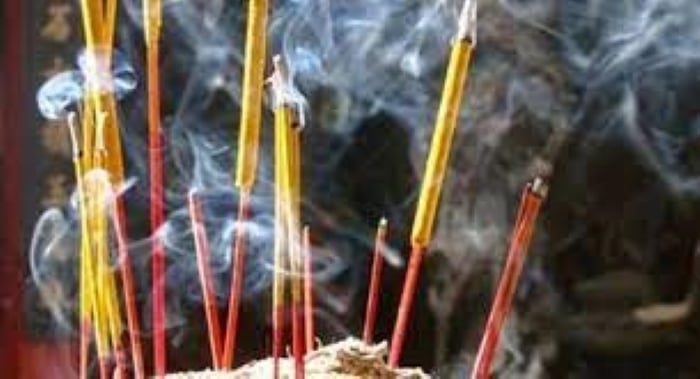
How to burn incense correctly
The incense burning ritual involves intricate cultural and spiritual nuances. The Vietnamese people always regard and study the feng shui aspect when burning incense.
When should Vietnamese people burn incense?
The incense burning ritual has become a habit of the Vietnamese people, usually taking place on holidays, festivals, full moon days, the first day of the month, or death anniversaries of family members. Because these are significant moments with a strong yin-yang connection. These are also appropriate days for you to light an incense stick to express your sincere reverence.
The proper order for burning incense
According to the spiritual culture of the Vietnamese people, there are often many altars and positions where people regularly burn incense, such as ancestral altars, altars for the God of Wealth, the Kitchen God, and Buddhist altars, etc.
Since there are many altars, it is necessary to pay attention to the proper burning order according to the incense burning ritual, specifically:
- Mother Quan Yin / Buddha altar
- Ancestral altar
- Earth God altar, God of Wealth
- Kitchen God altar
- Altar for deceased individuals
- Altar for offerings to wandering souls
- The number of incense sticks to burn
It is recommended to burn incense in odd numbers, such as 1, 3, 5, 7… Odd numbers represent positive energy, bringing luck and fortune. Even numbers like 2, 4, 6, 8… represent negative energy, carrying a heavy negative influence. The most commonly burned incense is sandalwood incense with a stick.
– Burning 1 incense stick: The number 1 is used to pray for peace, luck, and happiness. Peace incense is the name given to one incense stick that people use to pray to the divine spirits in their family.
– Burning 3 incense sticks: It is believed that people should burn incense on holidays, festivals, full moon days, or the first day of the month.
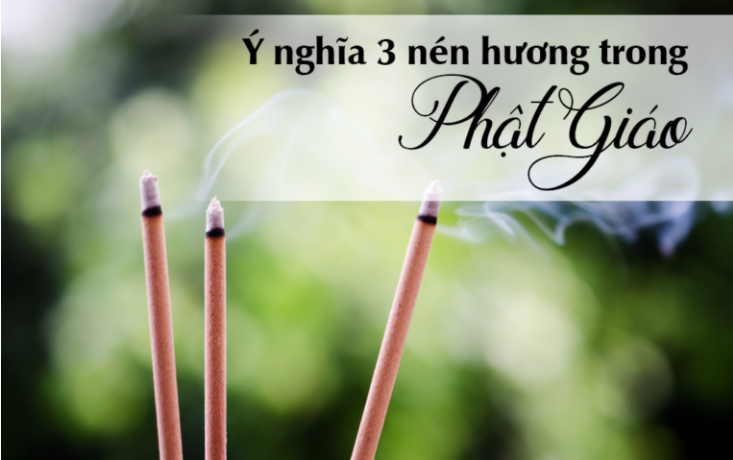
Three incense sticks can have different meanings, such as:
- Heaven – Earth – Human
- Buddha – Dharma – Sangha (Referring to the Triple Gem, which represents the Buddha, his teachings, and the community of monks)
- Desire – Form – Formlessness (The Three Realms)
- Past – Present – Future (The Three Times)
Most of these meanings remind people to be calm, direct their hearts towards the Buddha, towards their inner sincerity, and offer prayers.
– Burning 5 incense sticks: Five incense sticks represent the Five Elements associated with each person’s destiny: Metal, Wood, Water, Fire, and Earth. People often burn 5 incense sticks when conducting important or significant events that require the blessings of the Five Directions, heaven, and earth, to ensure the smooth progress of such events.
– Burning 7 incense sticks: Burning seven incense sticks represents the seven divine spirits who govern all three realms. It is a way to ask for support in warding off evil spirits and resolving difficulties. The incense burning ritual always acts as a strong shield that we trust and hope in during our most challenging times.
– Burning 9 incense sticks: Burning nine incense sticks, also known as the Nine Continuous Lotus Incense, is done to invite the Jade Emperor and the divine beings in the Thập Điện Diêm Vương to help. This is done during urgent and challenging situations where no solution seems possible.
Notes on the incense burning ritual
In order for our prayers and wishes to have the most effect and resonance, we need to pay attention to the following points when burning incense.
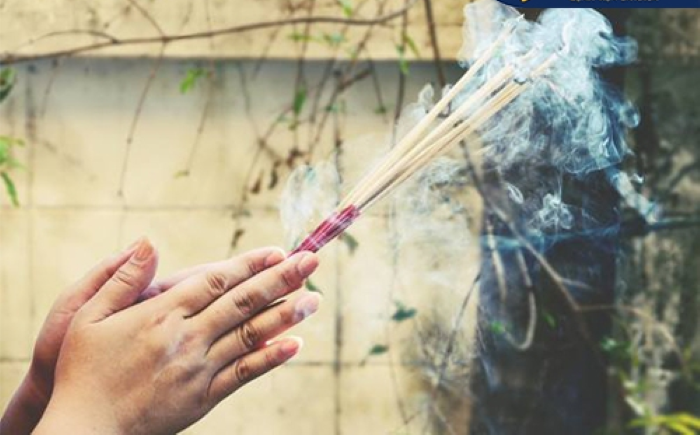
What to do when burning incense
- Insert the incense stick straight and avoid tilting it, as tilting represents an unstable and insincere devotion
- Avoid letting wind extinguish the incense before it burns out completely
- Do not let the flame of one incense stick come into contact with other incense sticks
- Do not pull out a burned incense stick; only burn new incense sticks
- When burning incense, do it sincerely and not perfunctorily; the incense burning ritual is an important religious activity that requires genuine faith and respect.
What to avoid when burning incense
- Do not burn an even number of incense sticks, as it is considered the most unfavorable
- Do not speak casually or dress inappropriately while burning incense, as it indicates a lack of respect
- Do not burn the wrong number of incense sticks
- Do not use low-quality incense, such as chemically-treated incense or incense of unknown origin.
7 Appropriate and Practical Lunar New Year Gifts for Teachers
With Lunar New Year just around the corner, what better way to express your appreciation to your teachers than with a special gift? Choosing the right gift can be tricky, so let Dien May XANH help you out! Here, we have hand-picked 7 luxurious yet suitable gifts that you can give to your teachers this Tet. Check them out now!


























